Do your pets love your pool just as much as you do? Playing with your beloved animals in the pool can be great exercise, but keeping them safe in the pool is important as well. We’ve created something just for you on how to plan for a pool with a pet before, during and after the building process.
What’s the best pool type for dogs?
Many pets enjoy the water as much as their owners do, and many families that have pets want to share their love for the water with their furry friends. It’s unwise to just let a dog or other pet jump into a backyard pool, though. They could damage the pool, injure someone or even endanger themselves. The best pool type for your family and fido is one that’s durable and scratch-resistant.
Before You Build: Choose a Pet-Friendly Material
Selecting the right type of pool is always important, but it’s especially so if animals will be using the pool. There are three kinds of inground pools, but only one that’s well suited for pets:
- Vinyl pools have liners that are easily torn by pets’ claws
- Gunite pools can be harsh on pets’ joints, paws and nails
- Fiberglass pools will withstand wear and tear caused by pets and not hurt them
Of these three, vinyl liner pools will prove the most worrisome when swimming with a pet as every rip in the liner caused by your pet will need to be repaired. If your pet creates a significant tear then the liner will need to be replaced sooner than later. If you choose to swim with your pet in a vinyl liner pool make sure to train them from a young age to stay calm and avoid the walls.
Gunite (or concrete) pools, in contrast, can withstand scratches however, Concrete is an ungiving material that can be hard on older pet’s joints as they’re getting in and out. Additionally, concrete can harm pets’ pads and nails if it’s not smoothed over with a coating, or if its coating wears off.
Fiberglass pools are best suited for pets, because they don’t have the disadvantages that vinyl and gunite pools present. Fiberglass is a durable material so it’s less likely to scratch or tear from pets’ nails. At the same time, it’s more forgiving than concrete (which is why fiberglass pools don’t crack when soil shifts, while concrete ones may). It’s give might be imperceptible to your eyes, but an older pet’s joints will notice the difference. Finally, fiberglass is a smooth material, not a rough one, so it won’t hurt pads or rip out nails.
Before You Build: Choose Pet-Friendly Equipment
Many dealers offer standard equipment packages with your pool, however, if you’re planning to swim with your pet on a regular basis you may want to consider expanded equipment options. Consider these slight adjustments to make maintaining your pool easier and free of pet hair:
- A faster pump will turn over your pool’s water more quickly to remove more contaminants
- Larger pipes will carry debris, including pet hair, to your pool’s skimmer basket
- A bigger filter will require less frequent cleaning or backwashing
Choose a Variable-Speed Pump
How quickly a pool’s water must be entirely turned over varies from state to state and with the type of pool. Residential pools almost always have slower turnover rates than public pools, though. Although specific times will differ slightly, on average residential pools often treat all of their water every 24 hours.
If only your family and friends are using your pool, turning all of its water over once a day is probably enough to keep the water clear and clean. If a pet’s going to be swimming in your pool, though, filtering all of its water every 24 hours likely won’t be fast enough to keep the water sanitary. It’s been estimated that a single dog introduces as many pollutants into a pool as three people would. If you have multiple dogs, then that figure must be multiplied. Worst of all, some of the things they introduce include fecal matter attached to their fur. To keep your pool free of bacteria and other contaminants, you’ll need to turn its water over more frequently than once a day. A dual- or variable-speed pump provides an energy-efficient way of quickly filtering your pool’s water after a pet’s been swimming in it. When Fido goes for a dip, simply increase your pump’s speed so that it filters water faster. Depending on your specific pump, this could cut the amount of time it takes to filter all of your pool’s water in half. When no animals are using your pool, the lowest speed should sufficiently filter the water so you can save on electricity.
Consider Larger Pipes
Skimmer baskets are remarkably efficient at filtering out debris that floats on the water, but they only work if the debris is able to reach them. Dog fur is especially notorious for getting caught in smaller pipes and not reaching the skimmer basket. If enough fur collects in your pool’s pipes, it’ll block other debris from reaching the skimmer basket and slow the flow of water through your pool’s filter. Make sure all the hair your pets shed will make it to the skimmer basket by installing larger pipes. Ask your pool contractor about wide pipes. Dog hair will be less likely to collect and cause problems in larger pipes.
Increase the Filter Size
No matter what filter you install, it will need to be cleaned more frequently when animals are in your pool. Nevertheless, you can reduce how often your pool’s filter needs to be cleaned by installing a larger one. (A larger filter may also be able to accommodate bigger pipes.)
All filters, cartridge and sand, large and small, will clear your water of contaminants brought into your pool by pets. Selecting a bigger one, however, will either make your life easier or save you money. If you perform your own pool maintenance, you may have to spray or backwash it less often. If you have a cleaning service, you may be able to space out appointments more.
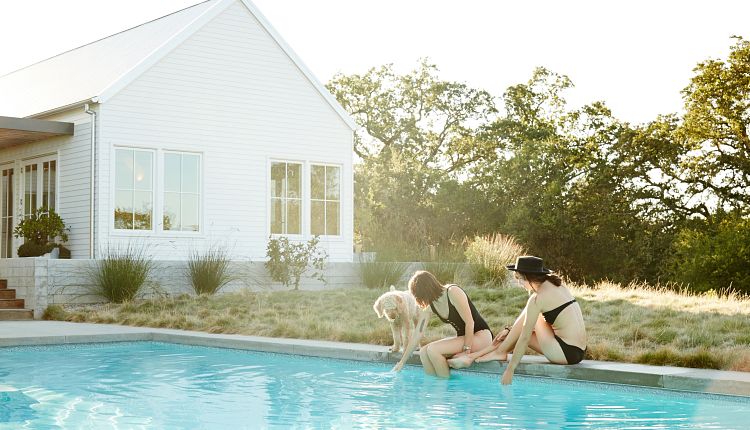
FAQs About Pets and Pools
Is swimming good for my pet?
Swimming is excellent for both people and pets. It’s a non-impact way that even older pets can exercise, and it burns a lot of calories. Even neurologically impaired animals that struggle to stand on land can often stand in shallower water, because the water provides some support for them.
What if my pet can’t swim?
If your pet can’t swim, they can still have fun in your pool. In addition to going on a tanning ledge, there are many companies that make animal life preservers. These will keep your pet afloat, and they’ll be able to paddle around in the deeper water.
What if I don’t want to get scratched?
When you’re in the water with a pet, there’s always a small risk that you could be scratched –even if you are careful to keep them slightly at bay. If you really don’t want to risk being scratched, you can still have fun together by playing fetch or tossing a ball for them to catch in the air. You don’t need to be in the water to participate in these games.
Your pets are beloved members of your family, so don’t forget to include them while in the building process. Keep in mind pool material and equipment choices in order to treat your whole family – pets included – to a pleasant swimming experience.
Editor’s note: Originally posted 10/2015.

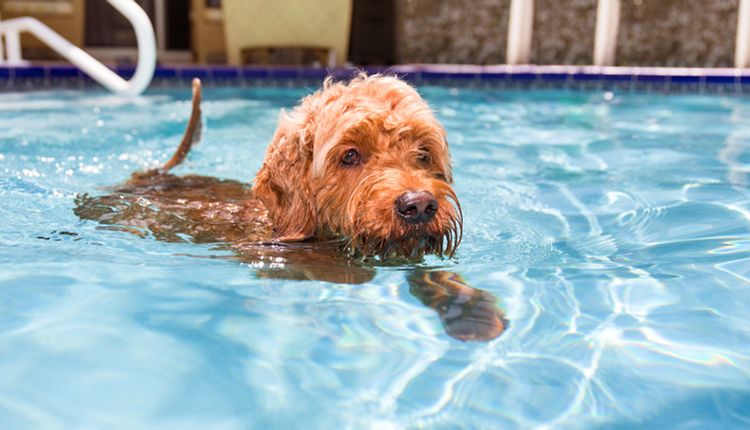

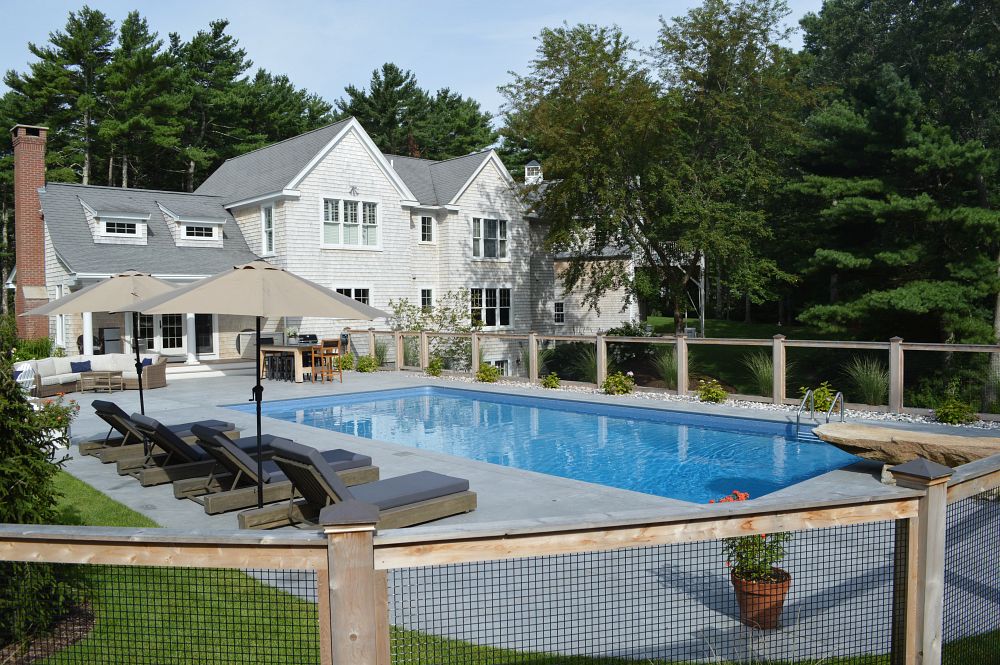
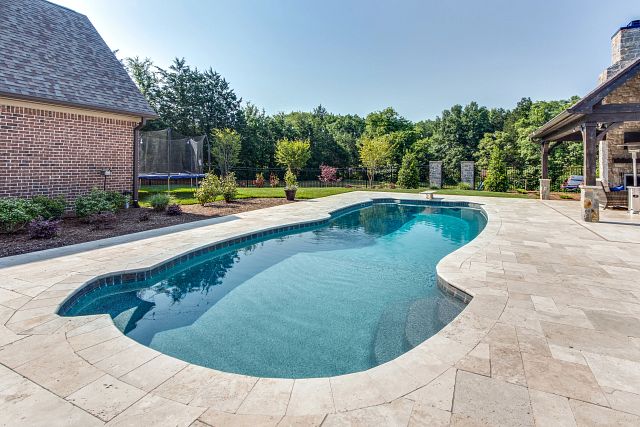
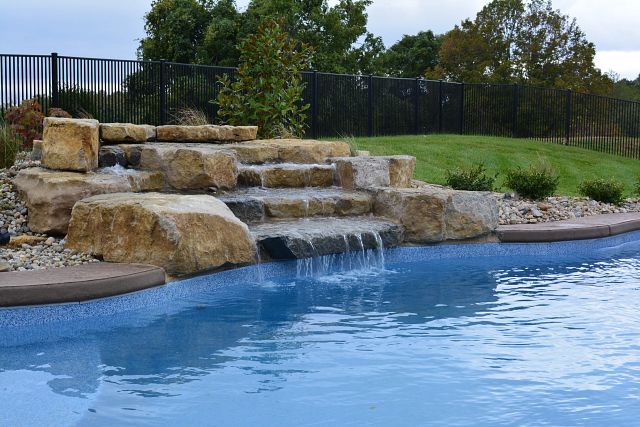
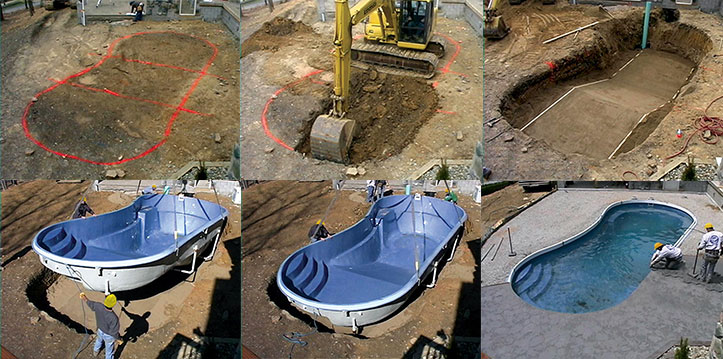
Join the discussion